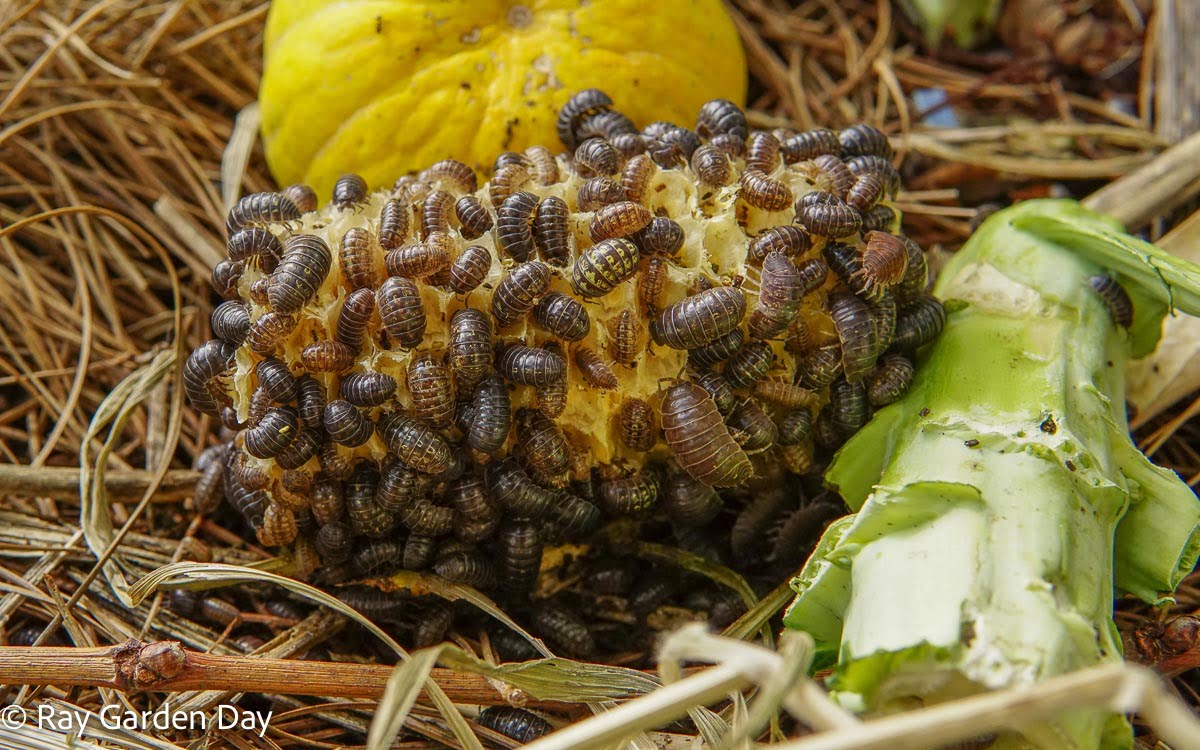This page contains a list of garden pests found in our garden here in Southern Arizona, USA. It contains descriptions and pictures of common garden pests. I include some helpful tips and links on how to treat them and homemade garden spray which I’ve had success with. This page gets updated regularly so be sure to check back often.
Our garden is teeming with life and we like it that way. This means we tolerate a small population of garden pests to preserve its ecosystem. It’s also a classroom for our daughter to learn about the garden is home to many living creatures, both plants, and animals.
- Aphids
- Grapeleaf Skeletonizer
- Grub Worms
- Mosquitoes
- Pack Rats
- Pillbug / Rolly Pollies Bug
- Squash Vine Borers
- Tomato Hornworms
Aphids
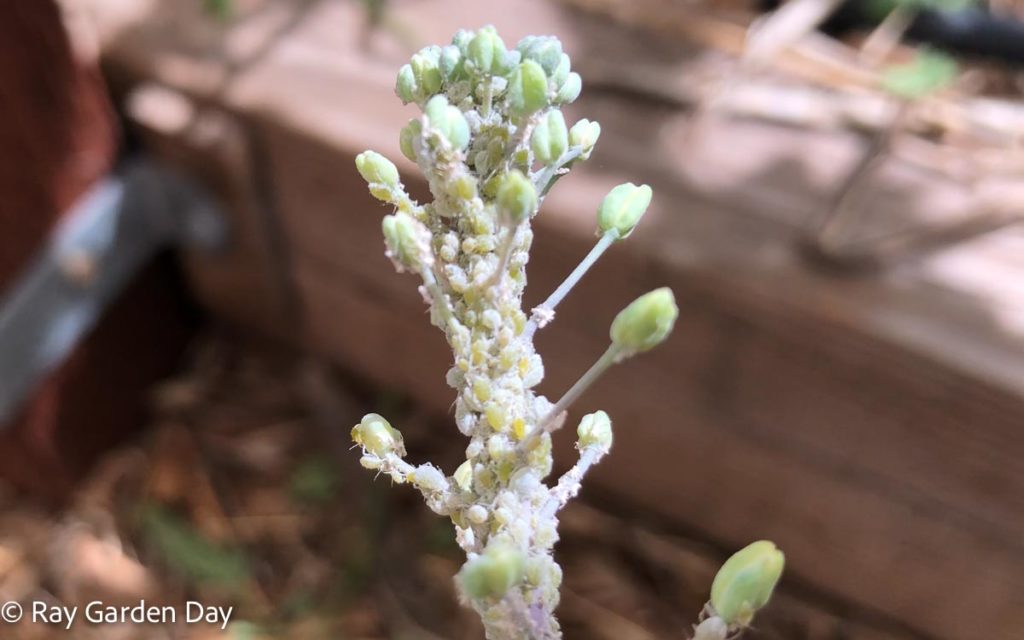
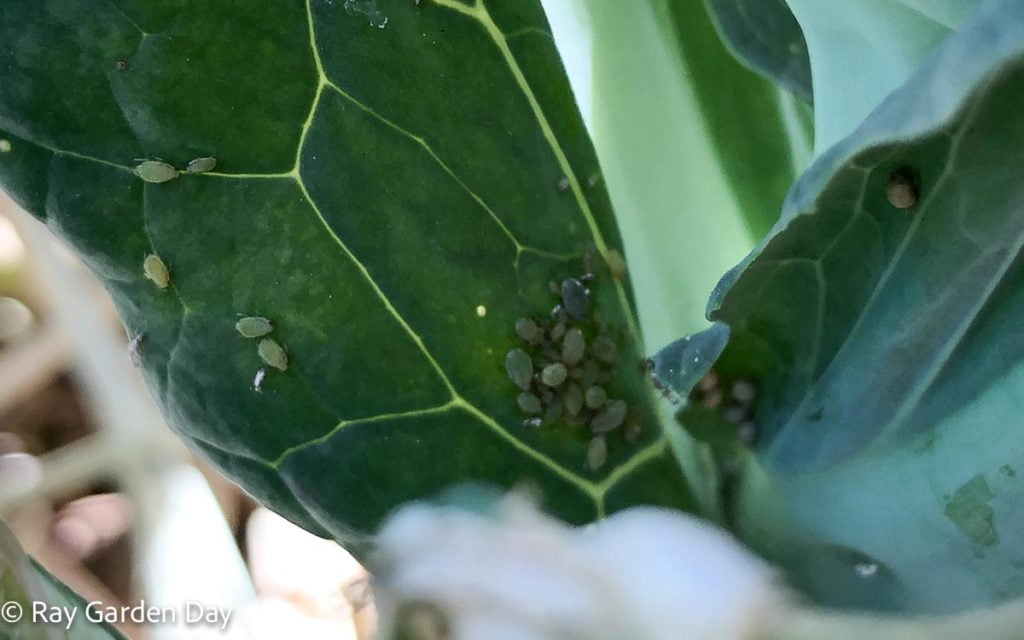
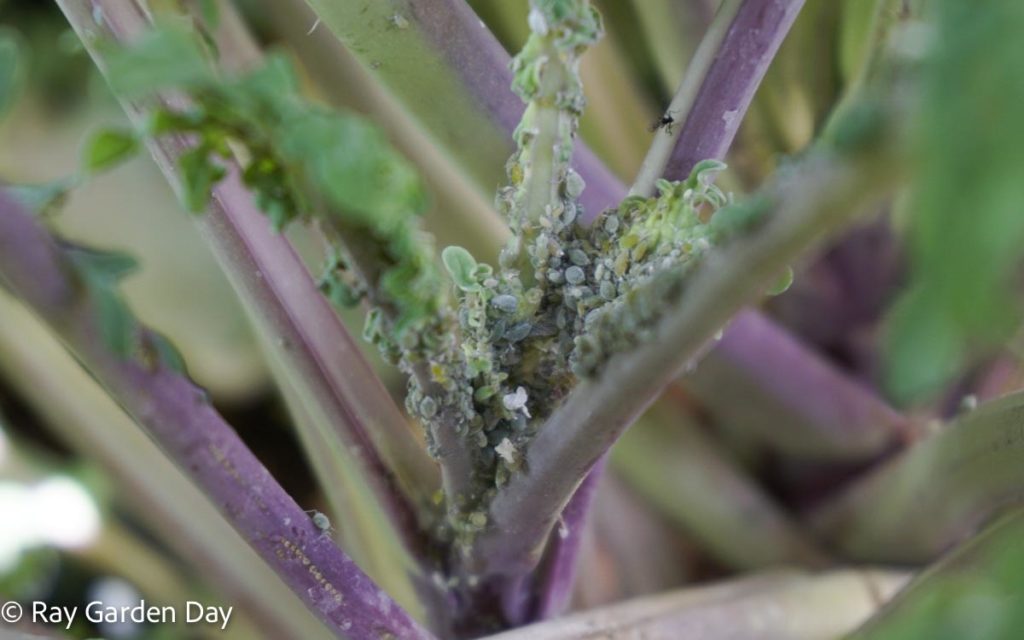
One common garden pest is Aphid. Small, soft-bodied insects are common in gardens everywhere. They vary in colors. Often aphids colonize on the new growth, stems, leaves, flowers of the plant. They feed by sucking the nutrient-rich sap out of the plant. Aphid infestations can cause stunts in growth and affect yield. They secrete a sugar-rich liquid called honeydew which attracts certain species of ants.
How to get rid of aphids
The colonies often start on the vegetables like kale, broccoli, and cabbage. For smaller aphids colonies, I prefer the non-pesticide methods. I use my finger and thumb to squash them. Most times I resort to the garden hose. The water jets from it will knock off the aphids, the ants, and rinse away the honeydew as well. For larger aphids infestations, I will use a homemade white oil spray to treat aphids. The solution works by suffocating the insects resulting in death in a day.
Grapeleaf Skeletonizer
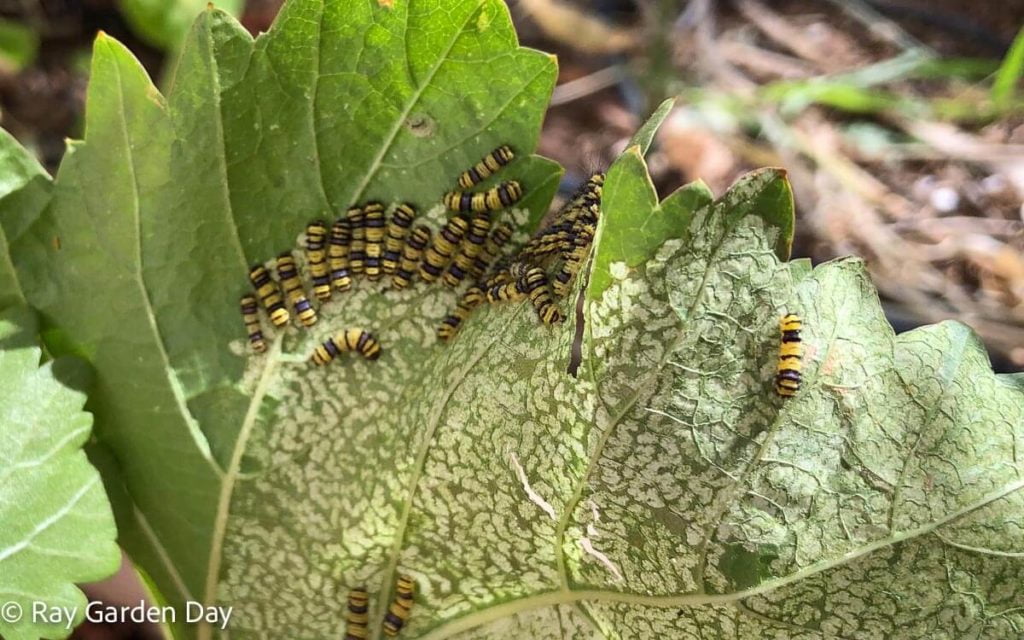
I enjoy growing grapes and get a decent crop each year. But every spring I have to deal with the Grapeleaf skeletonizer. The larvae of an adult Grapeleaf skeletonizer hatch in a week and start feeding right away. The initial symptoms include necrotic translucent blotches on the underside of the leaf. As the larvae get older they consume the other parts of the leaf, leaving only a few large veins. Leaving the leaf skeletonized in appearance. A large population of skeletonizer larvae can strip bare a grapevine of its leaves in a matter of days. Read more on how to get rid of grape leaf skeletonizer.
Grub Worms
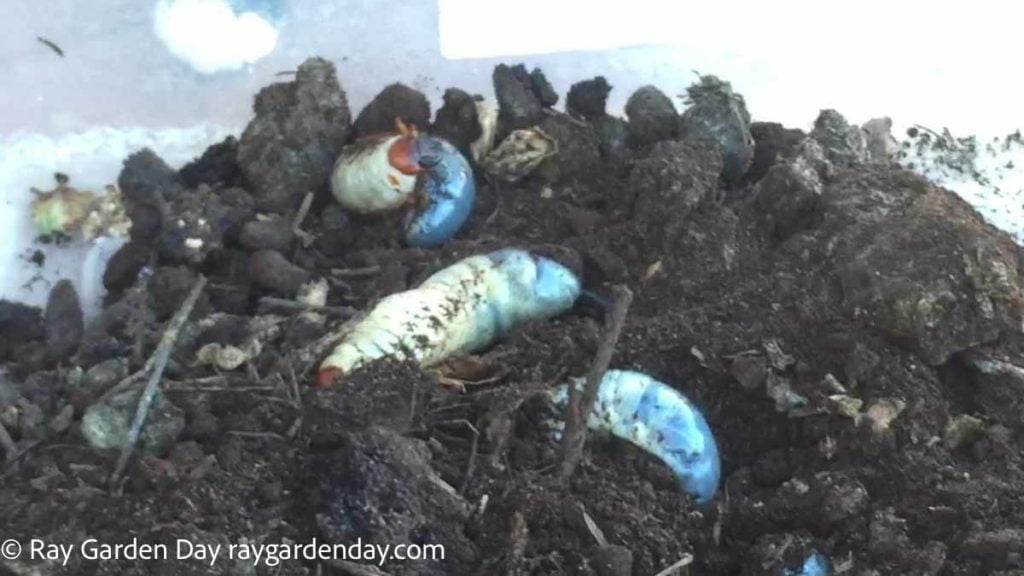
Grub worms, white grubs, turf grubs are general names given to beetle larvae. The type of grub worms depends on the species of beetle. For us, that means Green June Beetles that emerge between June to the monsoon season. Over the summer the female beetle burrows into the ground to lay around 200 eggs. They hatch two weeks later as larvae. They are creamy-white in color with an orange head and have six legs. Grubs remain in the soil and feed on plant roots until winter approaches. They hibernate during winter and awaken in spring to continue feeding and growing. After a series of molting, or shredding its outer skin, it emerges as an adult beetle in June.
How to get rid of grub worms
The best cause of action is to leave it to the birds. You’ll see high bird activities in your garden around March – June, as the grubs move closer to the soil surface. The birds poke holes into the soil to get at the grub worms. There’s no long-term damage and the holes made by the birds help aerate the soil or lawn.
Mosquitoes
Unlike other garden pests that attack our plants, mosquitoes go after us. Our blood to be precise. That is because they need the protein from the blood to be able to produce eggs. That means only female mosquitoes bite. The population of mosquitoes rises around the monsoon here in Arizona. The wet months provide ample breeding grounds for mosquitoes as they need water to lay eggs.
How to get rid of mosquitoes?
It is impossible to get rid of mosquitoes completely. But there are some things you can do to limit the number of mosquitoes in your yard. Remove any source of standing water in your garden. Check pet bowls for mosquitoes larvae, empty, and change the water as needed.
Natural mosquitoes repellent plants and essential oil
One way to keep moquettes out of the garden is to grow plants that are natural mosquitoes repellent. These are Basil, Rosemary, Peppermint, Marigolds, and Lemongrass. Mint is easy to grow and you can make peppermint oil out of leaves and stems. When applied to the skin, the natural scents of the mint oil repel mosquitoes. Peppermint oil is also effective at relieving itches from bug bites.
Pack Rats
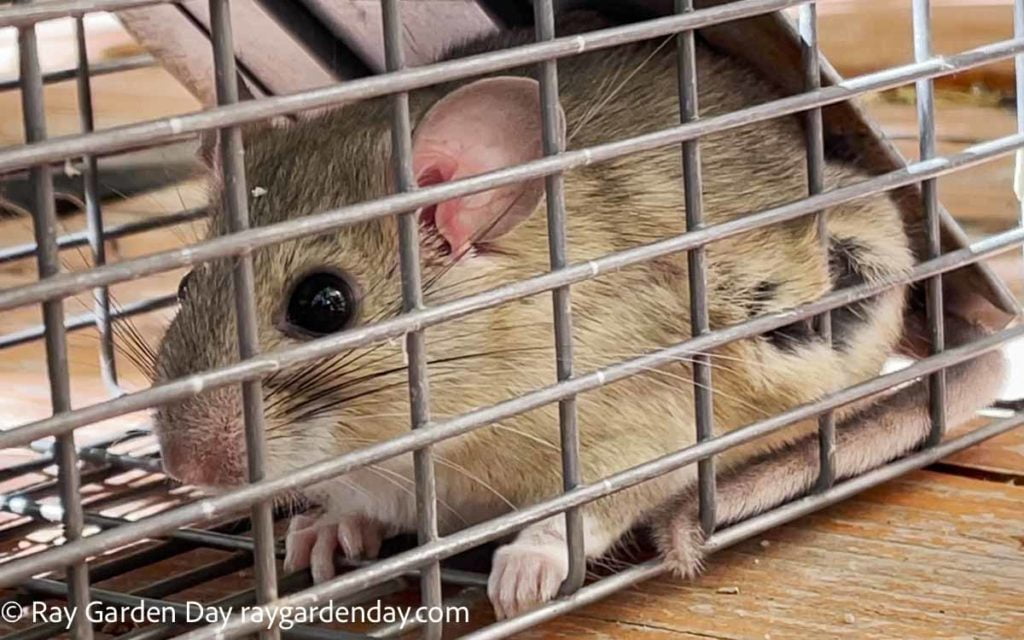
Common here in Arizona are the White-throated Wood Rats. Most gardeners refer to them as Pack Rats. A rodent of the genus neotoma family. These cute, big-eyes-big-ears, rats play a vital role in the desert ecosystem. They help disperse desert seeds and their poop is a good source of fertilizer. Packrats promote biodiversity among desert animals.
Don’t kill the packrats. Move them. I have a guide on How to Get Rid of Pack Rats Naturally.
Pillbug / Rolly Pollies Bug
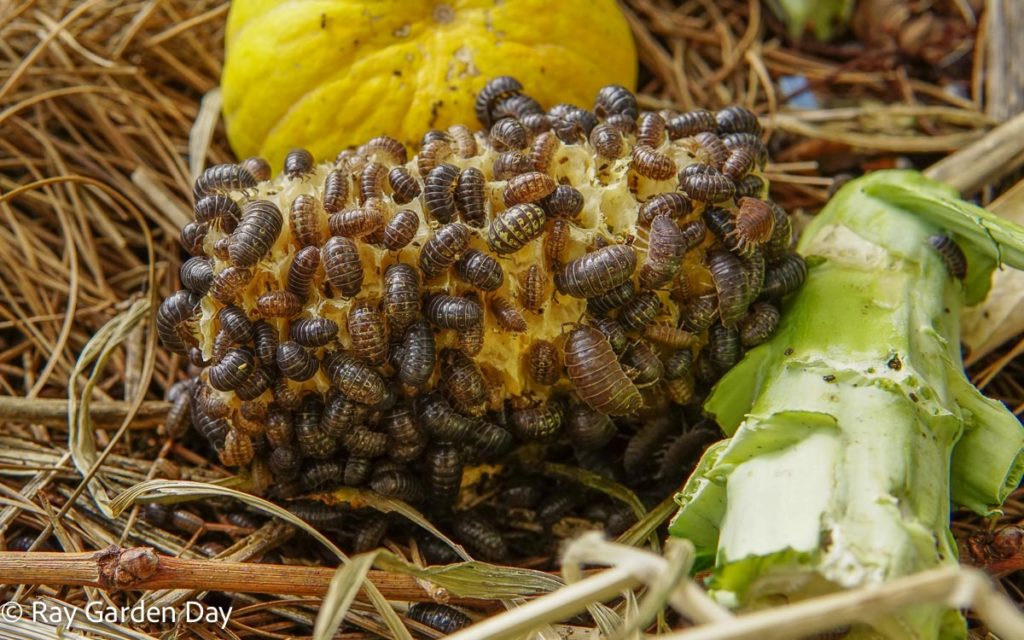
Our favorite garden pests go by many names. Pillbug is a common name but they’re also often called Roly-Poly, Doodlebug, Wood Shrimp, Sowbugs, and Chiggypigs in the UK. Pillbugs are closely related to shrimp and lobsters than any other garden insects.
Our kids love them. It’s fun for them to collect and play with the rolly pollies, seeing them curl into a little ball. Also, Pillbugs help break down organic matter in the garden. They are great composters. Though large Pill bugs population is not good either. They will feed on seedlings, roots, and any lower leaves of vegetables if they have to fight for food.
How to protect seedlings from Pillbugs?
A couple of methods to protect young tender plants against Pillbugs have worked well for me.
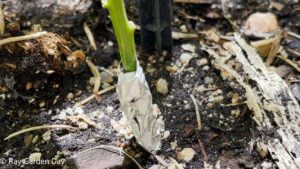
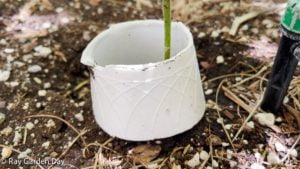
The first is to wrap aluminum foil around the stem of the plant. Not too tight that will choke the plant to suffocate. Backfill the soil around the base of the plant. Make sure to cover the lower part of the foil. This keeps the Rolly pollies from chewing on the stem.
The second method is to cover young seedlings with repurposed foam cups. Cut off the bottom of the container and place it around the young transplant, forming a collar. Press down into the soil so that there’s no gap for the pillbugs to crawl under. You can also use the top half of a clear water bottle. Thus warding off against chewing insects and protect the plant from the cold.
Squash Vine Borers
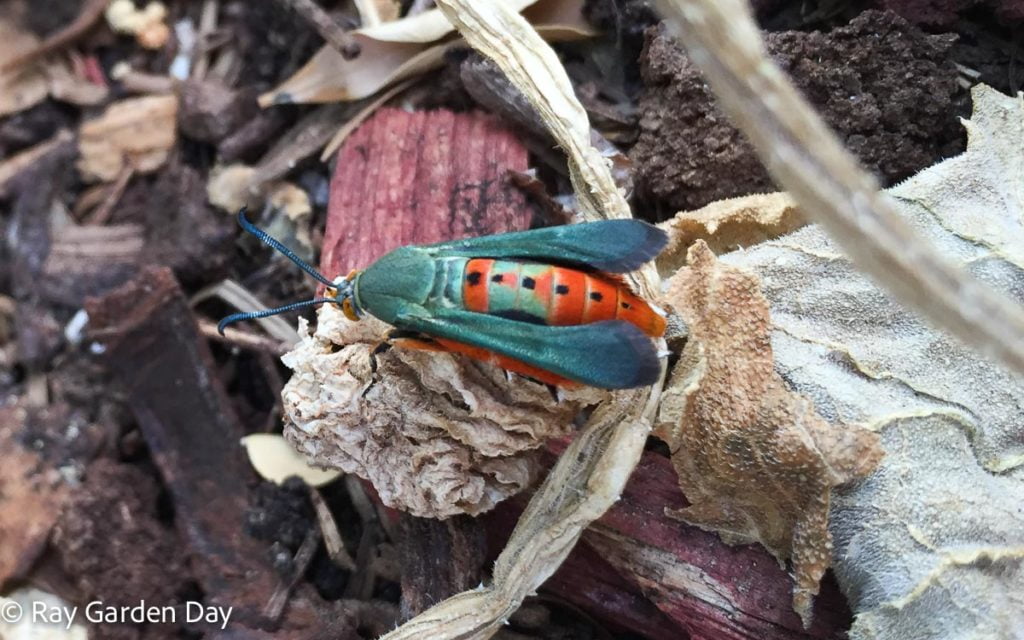
A Squash Vine Borers aka Squash Borer looks like a wasp. The adult vine borer is a moth about 1/2 inch long. The abdomen is bright orange with black spots on the back. The wings are gray. The squash vine borers are pests to both summer and winter squashes. The female squash borers lay reddish-brown eggs near the base of the crop. Once hatched, the milk-white-colored larva burrows into the stems to feed.
How to prevent Squash Vine Borers?
Squash borers appear in late spring. Because they are so destructive it is best to inspect your garden daily. Remove unhatched eggs by hands or water jet from a garden hose. Yellow flowers of squash vines attract the vine borers.
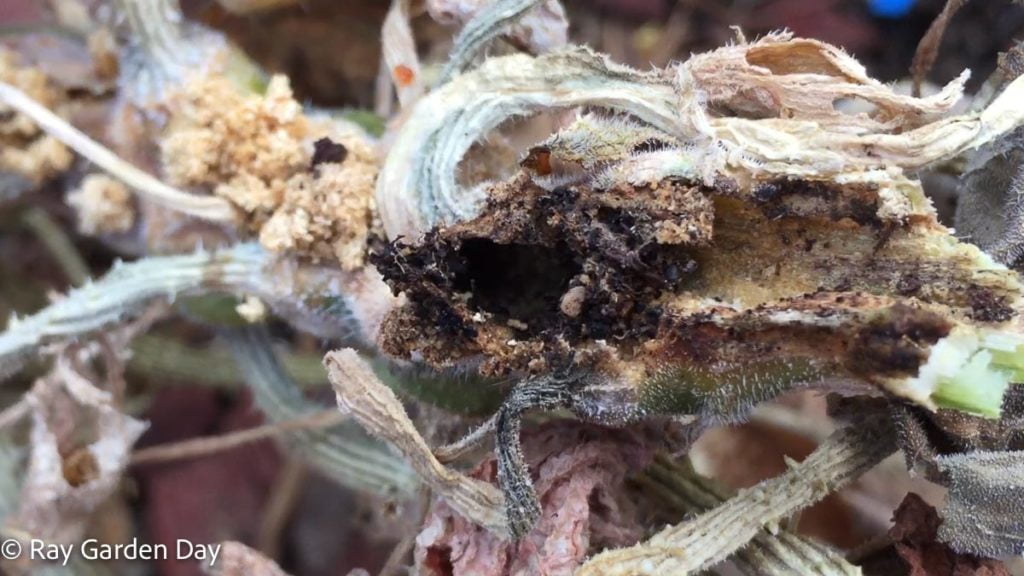
Once the larva entered the plant, it’s a lost battle for the host plant.
Tomato Hornworms
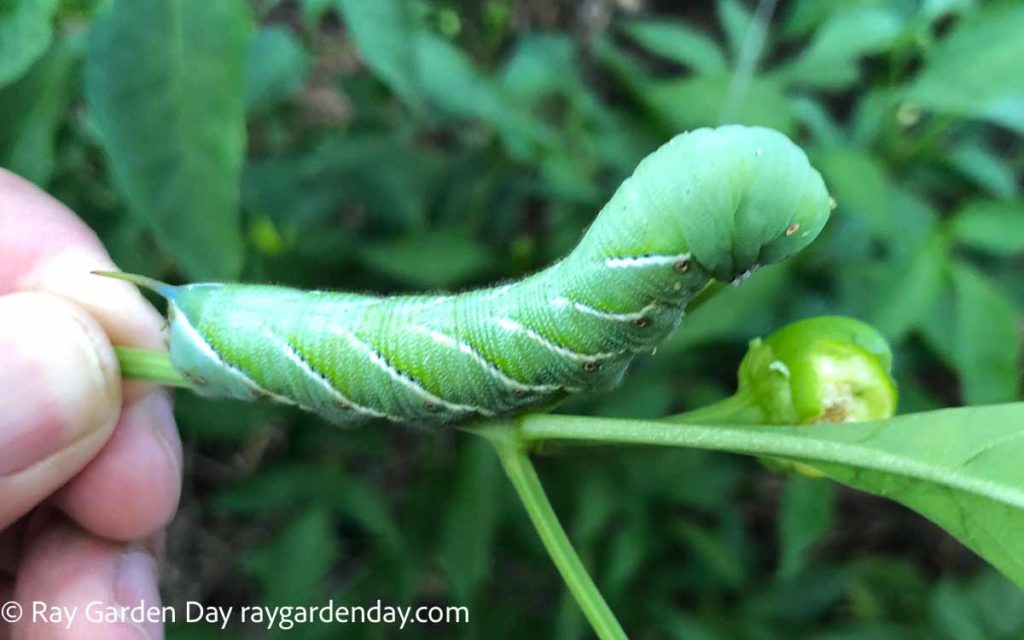
A green horned caterpillar is also known as a tomato hornworm. Tomato hornworms are a common type of caterpillar often found in home gardens. They like to feed on the leaves and young tender stems of tomato vines, pepper plants, or eggplants. You can identify a tomato hornworm caterpillar by its V-shaped markings on its green body. It has a large head and a protruding spiky tail that looks like a horn. They are well camouflaged and often active at night which makes them difficult to spot. A single tomato hornworm can defoliate a plant in a few days. Once the hornworm has stripped the tomato plant of its leaves, it then feeds on the fruits themselves.
How to get rid of tomato hornworms
You want to check for tomato hornworms as often as you can. I do it early in the morning before the hornworms go into hiding on the underside of the leaves. The best way is to pick the tomato hornworms off the plants. Lady beetles and green lacewings often prey on young tomato hornworms. Wasp is another type of natural enemy to tomato hornworms.
